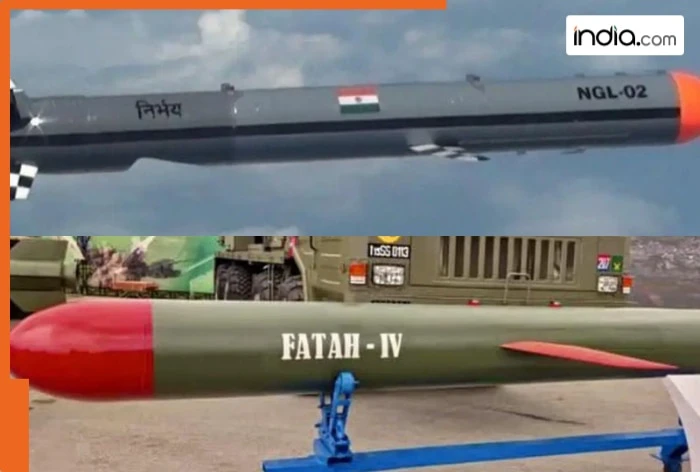New Delhi: Following the drubbing they got at the hands of India, the Pakistanis are trying hard to come to terms, and to bridge the gap between their and India’s military infrastructure.
Going ahead in this direction, Pakistan unveiled the FATAH-IV, a new-generation subsonic ground-launched cruise missile, on its Independence Day, 14 August. The FATAH-IV is designed to strike deep inside hostile territory with unprecedented precision and survivability.
Experts are viewing this display as Islamabad’s show of force aimed at New Delhi.
India has had its subsonic cruise missile, the Nirbhay, since 2013, and it has only got better with time. The Nirbhay has placed India firmly ahead in subsonic cruise missile capability.
How will Pakistan’s FATAH-IV fare against India’s Nirbhay? Let’s take a comparative look.
FATAH-IV and Nirbhay’s design and range
The Fatah-IV is 7.5 metres long, weighs 1,530 kg, and carries a 330 kg warhead. Its range is reported at 750 km, and speed is Mach 0.7 (864.36 kmph).
Nirbhay is more compact at 6 metres with a weight of around 1,500-1,600 kg. however, it can carry a heavier 450 kg payload over a longer range of 800-1,000 km. The Nirbhay’s extra reach allows it to strike deeper into the enemy territory.
Warhead and Payload
The Fatah-IV’s payload is limited to a blast-fragmentation warhead, while the Nirbhay is designed for multiple warhead types, high explosive, submunitions, and even a small nuclear warhead of around 12 kilotons. This makes it adaptable to a far wider set of missions, from precision strikes on infrastructure to strategic deterrence. Pakistan’s Fatah-IV is limited to the conventional strike category.
Guidance, Navigation, and Survivability
The Fatah-IV integrates GPS/INS navigation with a dual-mode seeker combining electro-optical/infrared and radar sensors. It is also claimed that it has AI-driven target recognition. It uses terrain-following flight at just 50 metres above ground to avoid radar detection.
The Nirbhay offers comparable stealth profiles with sea-skimming and loitering capabilities, combined with an active radar seeker and the option to integrate India’s navigation satellite system for independence from GPS. The loitering feature, the ability to circle an area before selecting a target, adds tactical flexibility that Pakistan’s missiles do not match.
Mobility and Deployment
Both missiles use mobile transporter-erector-launchers (TELs) for shoot-and-scoot tactics. Fatah-IV TELs can carry three missiles and deploy across varied terrain. Nirbhay is launched from an all-terrain 12×12 mobile platform, with future variants planned for submarine deployment. This potential for land and sea launch gives India a clear advantage in multi-domain operations.
Operational Context and Maturity
Pakistan’s Fatah series has evolved quickly since 2021, moving from short-range guided rockets to the Fatah-IV’s extended range. However, the speed of introduction is not the same as battlefield maturity.
India’s Nirbhay has undergone multiple tests since 2013, solving guidance and propulsion issues, and is already deployed in limited numbers along the Line of Actual Control (LAC). Continuous refinements, including the indigenous Manik turbofan engine under the ITCM programme, ensure it remains an evolving, future-proof platform.
Conclusion
Pakistan’s Fatah-IV missile depicts its evolution, but overall, it is nowhere compared to India’s Nirbhay.
